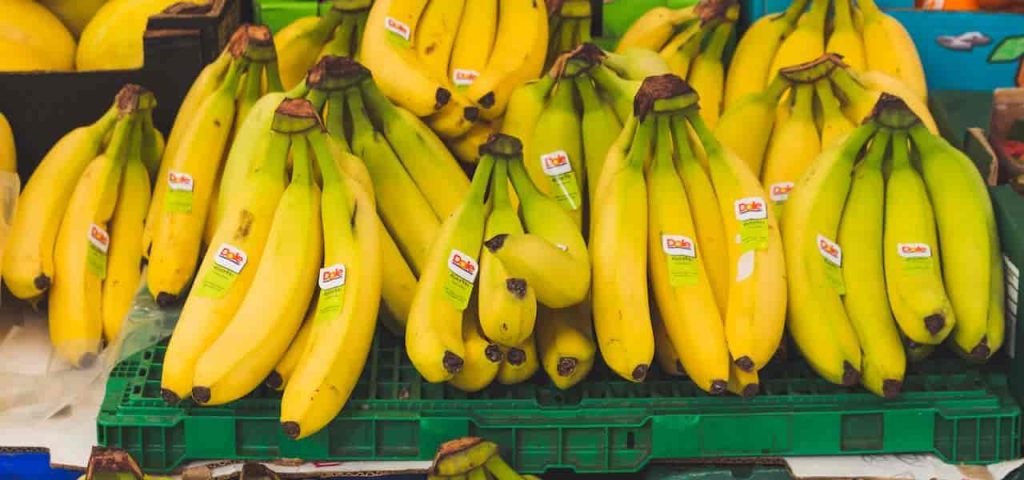Here is your complete guide to health benefits for bananas.
Introduction to Health Benefits for Bananas
Imagine a world where a single fruit can offer an abundance of health benefits, tantalizing your taste buds while nourishing your body. Well, that fruit exists, and it’s none other than the humble banana. In this article, we will delve into the extraordinary health advantages of bananas, revealing why this fruit should become a staple in your diet. From promoting digestion and boosting energy levels to strengthening your immune system and supporting heart health, bananas truly are a nutritional powerhouse. Here is your complete guide to the health benefits for bananas.
The Nutritional Powerhouse: Understanding Banana’s Composition
Let’s begin by understanding the nutritional profile of bananas. These delicious fruits are packed with essential nutrients. They are an excellent source of vitamins, including vitamin C, vitamin B6, and vitamin A. Bananas also contain essential minerals like potassium, magnesium, and manganese, all of which play crucial roles in maintaining overall health. Furthermore, their high dietary fiber content aids in digestion and keeps you feeling full and satisfied.
Nutritional Facts of Bananas
| Nutrient | Amount per 100g |
|---|---|
| Calories | 96 |
| Carbohydrates | 23.9g |
| Fiber | 2.6g |
| Sugar | 17.2g |
| Protein | 1.1g |
| Fat | 0.3g |
| Vitamin C | 8.7mg |
| Potassium | 358mg |
| Vitamin B6 | 0.4mg |
| Magnesium | 27mg |
| Manganese | 0.3mg |
Health Benefits of Bananas
| Health Benefit | Description |
|---|---|
| Excellent source of essential nutrients | Bananas are rich in essential nutrients like potassium, vitamin C, vitamin B6, dietary fiber, and manganese. |
| Promotes digestive health | The high fiber content in bananas can help regulate bowel movements and promote a healthy digestive system. |
| Provides energy and boosts mood | Bananas are a great source of carbohydrates, providing a quick and sustained energy boost. They also contain mood-enhancing nutrients. |
| Supports heart health | The potassium and fiber content in bananas may help maintain a healthy heart by supporting blood pressure and cholesterol levels. |
| May aid in weight management | Bananas are relatively low in calories, fat-free, and can help you feel full due to their fiber content, potentially aiding weight management. |
| Natural muscle relaxant | Bananas contain magnesium and potassium, which can help relax muscles and prevent cramps. |
| Supports kidney health | The high potassium content in bananas may help maintain proper kidney function and reduce the risk of kidney stones. |
| Boosts immune system | Bananas are a good source of vitamin C, which can support immune system function and help fight off infections. |
Enhancing Digestive Health with Bananas
Bananas are known for their impressive digestive benefits. The fiber present in bananas promotes healthy digestion by regulating bowel movements and preventing constipation. Moreover, bananas contain a unique type of fiber called pectin, which acts as a prebiotic, nourishing the beneficial gut bacteria. This, in turn, helps in maintaining a healthy gut environment and improves overall digestive health.
Boosting Energy Levels Naturally
Need a quick and sustained energy boost? Look no further than bananas. Packed with easily digestible carbohydrates, bananas provide an instant surge of energy, making them an ideal pre-workout snack. Athletes and active individuals can benefit from the natural sugars present in bananas, which provide a steady release of energy during physical activity. Additionally, bananas are rich in potassium, an electrolyte that helps prevent muscle cramps and aids in muscle function.

A Heart-Healthy Choice: Maintaining Cardiovascular Wellness
When it comes to heart health, bananas are an excellent choice. Their high potassium content and low sodium levels contribute to maintaining healthy blood pressure levels. Potassium helps relax blood vessel walls, reducing strain on the cardiovascular system. By including bananas in your diet, you can potentially lower the risk of heart disease and maintain a healthy heart.
Strengthening the Immune System
Bananas are not only delicious but also play a vital role in bolstering your immune system. They are rich in essential vitamins, particularly vitamin C, which is well-known for its immune-boosting properties. Vitamin C stimulates the production of white blood cells, strengthening the body’s defense against infections and diseases. By incorporating bananas into your diet, you can give your immune system a natural and delicious boost.
Promoting Mental Wellbeing and Mood Regulation
Did you know that bananas can contribute to your mental wellbeing? These fruits contain compounds such as serotonin and dopamine, known as “feel-good” neurotransmitters. Serotonin helps regulate mood, sleep, and appetite, while dopamine plays a role in motivation and pleasure. Including bananas in your diet can potentially reduce anxiety, alleviate stress, and improve overall mental health.

Weight Management with Bananas
If you’re on a weight loss journey, bananas can be your trusted ally. Despite their sweet taste, bananas are relatively low in calories and fat. Their high fiber content provides a feeling of fullness, reducing the urge to snack on unhealthy foods. Moreover, bananas can satisfy your sweet tooth, curbing cravings for sugary treats. By incorporating bananas into your diet, you can manage your weight effectively and promote a healthier lifestyle.
When to Eat Bananas
| Timing | Description |
|---|---|
| Pre-Workout | Consuming a banana before a workout can provide a quick source of energy due to its natural sugars and carbohydrates. |
| Post-Workout | Bananas can be eaten after a workout to replenish glycogen stores, provide essential nutrients, and aid in recovery. |
| Breakfast | Including a banana in your breakfast can help kick-start your day with a boost of energy and essential nutrients. |
| Snack | Bananas make a convenient and nutritious snack option, providing a natural source of energy and dietary fiber. |
| Smoothies | Adding a banana to your smoothie can enhance its creaminess, add natural sweetness, and provide nutritional benefits. |
| Baking and Cooking | Ripe bananas are excellent for baking and can be used in recipes for bread, muffins, pancakes, and other treats. |
| Desserts | Bananas can be enjoyed in various desserts like banana splits, banana ice cream, or as a topping for yogurt or oats. |
| Anytime | Ultimately, bananas can be consumed at any time of the day, depending on personal preferences and nutritional needs. |
Fitness Recipes with Banana
| Recipe | Description |
|---|---|
| Banana Protein Pancakes | Delicious and protein-packed pancakes made with ripe bananas, protein powder, oats, and egg whites. |
| Banana Smoothie Bowl | A refreshing and nutritious breakfast bowl made with frozen bananas, almond milk, and topped with granola and fruits. |
| Banana Oatmeal Cookies | Healthy cookies made with mashed bananas, oats, and optional add-ins like nuts, dark chocolate chips, or dried fruit. |
| Banana Nut Protein Shake | A creamy protein shake made with bananas, almond milk, protein powder, and a handful of nuts for added nutrients. |
| Banana Berry Protein Muffins | Moist and protein-rich muffins made with bananas, berries, protein powder, whole wheat flour, and Greek yogurt. |
| Banana Chia Pudding | A nutrient-dense and satisfying pudding made with ripe bananas, chia seeds, almond milk, and a touch of sweetener. |
| Banana Almond Energy Bites | Energy-boosting bites made with mashed bananas, almond butter, rolled oats, and a sprinkle of chia seeds. |
| Banana Peanut Butter Protein Bars | Protein bars combining mashed bananas, peanut butter, protein powder, and oats for a healthy and filling snack. |
FAQs About Health Benefits for Bananas
Is it good to eat a banana every day?
Eating a banana every day can be highly beneficial for your health. Bananas are rich in essential nutrients like vitamins, minerals, and fiber. They provide a good source of energy, aid in digestion, and can contribute to maintaining healthy blood pressure levels. However, it’s important to note that a balanced and varied diet is key for overall health, so while bananas offer numerous benefits, it’s best to incorporate a diverse range of fruits and vegetables into your daily routine.
What is the medical benefit of a banana?
Bananas offer several medical benefits. They are a great source of potassium, which is crucial for maintaining healthy blood pressure and heart function. The fiber content in bananas aids in digestion and promotes regular bowel movements, preventing constipation. Additionally, bananas contain vitamins such as vitamin C, which boosts the immune system, and vitamin B6, which supports brain health and the production of red blood cells. Overall, the combination of essential nutrients in bananas contributes to overall well-being.
Why are bananas the healthiest fruit?
Bananas are often considered one of the healthiest fruits due to their impressive nutritional profile and the wide range of health benefits they offer. They are an excellent source of essential nutrients, including potassium, fiber, vitamin C, and vitamin B6. Bananas are easy to digest, making them a suitable choice for people of all ages. Additionally, bananas are readily available, affordable, and versatile, making it convenient to incorporate them into your daily diet. The combination of their nutritional content, health benefits, and accessibility contributes to bananas being recognized as one of the healthiest fruits.
Read More About the Benefits of Good Morning Exercise.
Conclusion
The numerous health benefits of bananas make them a true superfood. From promoting healthy digestion and boosting energy levels to strengthening the immune system and supporting heart health, bananas offer a wide range of advantages. Whether you enjoy them on their own or incorporate them into smoothies, oatmeal, or baked goods, the versatility of bananas allows for endless possibilities.
Read More About The Ultimate Warm-Up Routine for a Killer Back Workout.
So, the next time you reach for a snack, consider grabbing a banana. Not only will you satisfy your taste buds with its natural sweetness, but you’ll also be treating your body to a myriad of health benefits. From providing essential nutrients and aiding digestion to boosting energy levels and supporting heart health, bananas truly are a remarkable fruit.
Read More About The Ultimate Nutrition Facts of Plums.
Incorporating bananas into your daily routine is simple. Start by adding sliced bananas to your breakfast cereal or yogurt for a nutritious and filling meal. For a quick energy boost before a workout, enjoy a banana as a pre-workout snack. You can also freeze ripe bananas and blend them with other fruits to create a refreshing and healthy smoothie.
Read More About Walk 10000 Steps a Day.
Remember to choose ripe bananas for optimal taste and nutritional benefits. Look for bananas with yellow peels, perhaps with a few brown specks, as they are at their peak ripeness. If you prefer a sweeter taste, wait until the banana peel is fully brown before consuming.
Read More About Quinoa Is Gluten Free?
In conclusion, the health benefits of bananas are truly remarkable. From aiding digestion and boosting energy levels to strengthening the immune system and supporting heart health, bananas offer a wide array of advantages that can enhance your overall well-being. So, embrace the power of this delicious fruit and make bananas a part of your daily diet. Your body and taste buds will thank you!
Read More About The Nutrition Facts Of Strawberries.
Sources:
- Ware, M. (2021). What are the health benefits of bananas? Medical News Today. https://www.medicalnewstoday.com/articles/271157
- Gunnars, K. (2019). 11 Evidence-Based Health Benefits of Bananas. Healthline. https://www.healthline.com/nutrition/11-proven-benefits-of-bananas

